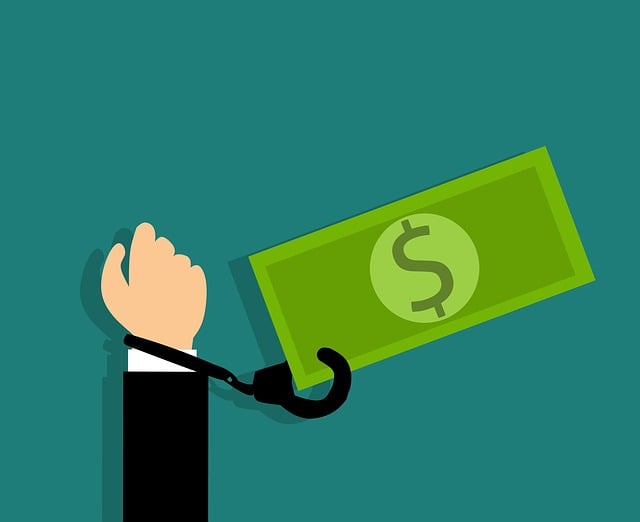Unemployment exacerbates debt management challenges, making Debt Consolidation Loans a strategic solution. These loans merge multiple debts into one manageable payment, reducing stress and simplifying repayment. By consolidating, individuals can secure lower interest rates, extend terms, and eliminate collections calls. To qualify, assess financial situation and credit history; use online platforms for estimation. Repayment involves structured payments, automatic arrangements, and targeted debt prioritization for improved financial control.
Unemployment can be a financial storm, leaving individuals grappling with overwhelming debts and uncertain futures. In such challenging times, debt consolidation loans emerge as a lifeline, offering a strategic path to financial stability. This article explores how these loans can help manage unemployment-induced debt. We’ll delve into the financial impact of job loss, the role of Debt Consolidation in simplifying repayment, eligibility criteria, and powerful strategies for successful loan repayment.
Understanding Unemployment and Its Financial Impact
Unemployment can have a profound and immediate impact on an individual’s financial health, often leading many to explore options for managing their debt. When job prospects fade, income streams cease, leaving people struggling to meet basic expenses, including loan repayments. This financial strain highlights the need for strategic solutions, such as Debt Consolidation Loans, which offer a potential lifeline in turbulent times.
The consequences of unemployment extend beyond the loss of income. It can trigger a domino effect, where outstanding debts become increasingly difficult to manage. Debt consolidation allows individuals to simplify this process by combining multiple loans or bills into a single, more manageable payment. This approach not only eases financial stress but also provides clarity and control over debt repayment during challenging economic periods.
The Role of Debt Consolidation Loans in Managing Debts
Debt consolidation loans offer a strategic approach to managing multiple debts by combining them into a single, more manageable loan. This simplifies repayment by reducing the number of payments from various creditors to just one. The primary advantage lies in its ability to streamline financial obligations, especially for individuals grappling with unemployment and high debt levels. By consolidating, borrowers can potentially lower their overall interest rates, which could result in significant savings over time.
These loans are particularly attractive as they provide a clear repayment plan, allowing people to focus on rebuilding their financial stability. With a consolidated loan, individuals can allocate their income more efficiently, directing funds towards repaying the debt rather than multiple creditors. This focused approach is crucial for those aiming to regain control of their finances and move forward despite challenging circumstances like unemployment.
How to Qualify for Debt Consolidation Loans
Debt consolidation loans can be a viable option for individuals struggling with multiple debts and high-interest rates. To qualify, start by assessing your financial situation. Calculate your total debt amount and monthly payments across all creditors. This gives you a clear picture of how much you can save through consolidation. Next, review your credit history; while not always a strict requirement, good credit scores often lead to more favorable loan terms. Lenders look for consistent repayment histories and lower credit utilization ratios.
If you have a solid financial foundation, stable income, and a reasonable credit score, you’re likely a strong candidate. Several online platforms offer debt consolidation calculators to estimate potential savings and suitable loan amounts. These tools simplify the process by matching your financial data with available lenders. Remember, transparency is key; be prepared to disclose all relevant information about your debts and financial history.
Benefits of Using Debt Consolidation Loans for Unemployment Situations
When facing unemployment, managing multiple debts can feel overwhelming. This is where debt consolidation loans step in as a potential lifeline. These loans offer a strategic approach to repaying various debts by combining them into a single, more manageable payment. By doing so, individuals can alleviate the stress of juggling multiple due dates and interest rates, simplifying their financial obligations during an already challenging period.
One significant advantage is the opportunity to negotiate better terms with lenders. With consolidated debt, borrowers may have leeway to agree on lower interest rates and extended repayment periods, making it easier to stay afloat financially. This method can also prevent collections calls and late fees, which are common when dealing with multiple debts separately. Additionally, a debt consolidation loan provides a clear path to debt elimination, giving individuals a sense of control and stability during unemployment.
Strategies to Repay Consolidated Loans Effectively
When it comes to repaying consolidated loans effectively, a structured approach is key. First, prioritize making consistent and timely payments on your debt consolidation loan. This demonstrates responsible borrowing and can help build a positive credit history. Setting up automatic payments or enrolling in direct debit arrangements with your lender streamlines this process, ensuring you never miss a deadline.
Additionally, focus on paying down high-interest debts first while maintaining minimum payments on others. The snowball method, where you pay off the smallest balances first and then roll that freed-up money towards larger debts, can be effective for emotional motivation. Alternatively, the avalanche method prioritizes eliminating debts with the highest interest rates first, saving you more in the long run.
When facing unemployment, Debt Consolidation Loans can provide a strategic solution to manage and repay outstanding debts. By consolidating various loan and bill payments into a single, more manageable payment, these loans offer financial relief and the chance to regain control. With careful consideration of repayment strategies, individuals can effectively navigate their financial journey during challenging times, ensuring long-term stability and a path to recovery.
